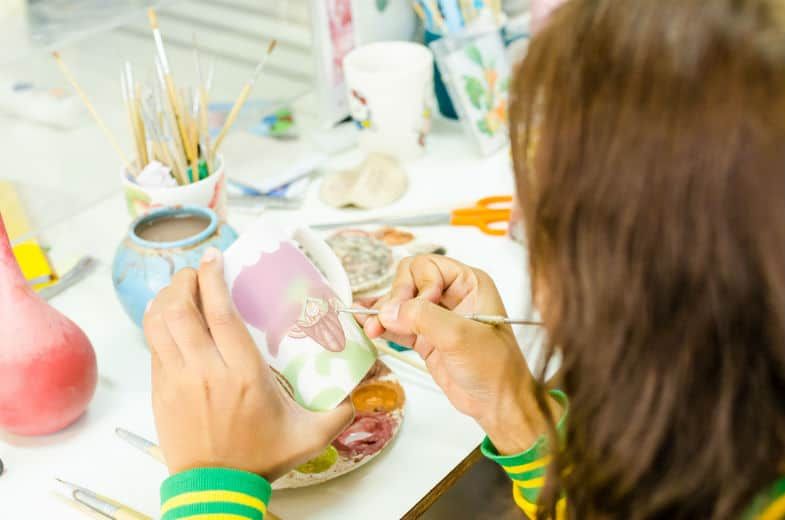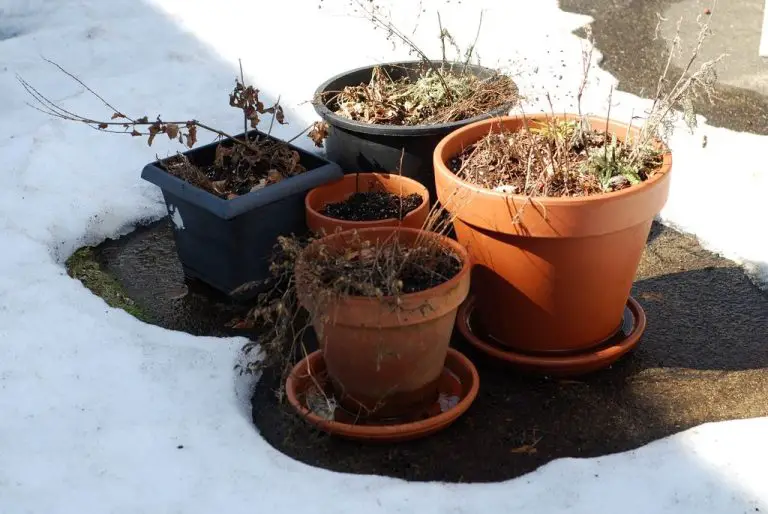Can Stroke And Coat Be Used As Underglaze?
What is Underglaze?
Underglaze is a type of ceramic decoration used in pottery and ceramics. It refers to any design or color that is applied to the raw clay or bisque before a transparent glaze is added on top. The underglaze becomes visible through the clear glaze after firing.
There are several types of underglaze available:
- Liquid underglaze – These liquid underglaze colors can be brushed or poured onto greenware or bisque. They are made from ceramic stains suspended in a flux.
- Underglaze pencils – These colored pencils allow for drawing fine details and lines. The lines become permanent after firing.
- Underglaze pastes or china paints – These thicker underglazes come in jars and can be painted onto the clay surface with a brush.
Underglazes are commonly used to:
- Create colored designs, patterns, drawings, or text on pottery.
- Outline areas or divide sections before glazing.
- Add extra color and accents beneath a clear glaze.
- Produce pottery with multiple layers of color and texture.
Underglazes can be painted in any design before covering with a transparent glaze. Firing permanently affixes the underglaze decorations to the clay.
What is Stroke and Coat?
Stroke & Coat is a versatile colored coating product made by Mayco that can be used in different ways. It has a smooth, creamy consistency and is highly pigmented with bright colors.
Stroke & Coat is different from traditional underglazes in a few key ways:
- It can be applied to unfired greenware, bisqueware, or glazed ware. Traditional underglazes are usually only applied to bisqueware.
- It develops a glossy surface after firing, unlike the matte finish of most underglazes. However, it can be made matte by applying a matte clear glaze over it.
- It can be fired up to cone 6, higher than some underglazes which max out at cone 04.
- The colors are very vibrant even when fired to higher temperatures. Underglaze colors tend to dull more at higher cone firings.
So while Stroke & Coat shares some similarities with underglazes, the ability to use it on greenware, the glossy surface, and wide firing range help set it apart as its own type of versatile colored coating.
Using Stroke and Coat as Underglaze
Stroke and Coat can absolutely be used as an underglaze on both greenware and bisqueware pieces. According to The Pottery Piazza’s Stroke and Coat Application Guide, Stroke and Coat is an underglaze product that is formulated to be painted on greenware and bisqueware. It was designed to be used under a clear glaze and will produce a matte finish when fired.
The main benefits of using Stroke and Coat as an underglaze are its versatility and vibrancy. Stroke and Coat can be used to hand paint or spray intricate designs in a wide variety of colors. The underglaze is highly pigmented, allowing artists to achieve bold, opaque coverage without having to apply multiple coats. Stroke and Coat also comes in a wide array of colors that can be mixed to create custom shades.
In terms of application, Stroke and Coat should be applied to greenware or bisqueware using soft bristle brushes, spray equipment, or decorating tools. It’s important to get good contact between the Stroke and Coat and the clay surface. Let the underglaze dry completely between colors. Then apply a transparent glaze over the top and fire to the appropriate cone to get the finished matte result.
One potential drawback is that Stroke and Coat can rub off if it’s not fully set before applying a top coat of clear glaze. It’s best to let it dry fully. Overall, Stroke and Coat delivers vivid colors and lends itself well to intricate underglaze detailing. With proper application it can produce stunning matte underglaze effects.
Preparing the Clay Surface
Before applying Stroke and Coat as an underglaze, it’s important to properly prepare the clay surface. This involves cleaning the surface and potentially applying a slip or engobe as a base layer.
First, clean the bisque or greenware thoroughly with a damp sponge to remove any dust or debris. Allow the surface to dry completely before moving to the next step. For greenware, be gentle so you don’t distort or damage the unfired clay.
Next, consider applying a thinned down slip or engobe (clay and water mixture) to fill in any small pores and create a smooth surface for the Stroke and Coat to adhere to. The engobe provides an even base color and allows the Stroke and Coat to glide on easily. For best bonding, let the engobe dry completely before applying the Stroke and Coat.
With the surface prepped, you’re ready to begin applying the Stroke and Coat underglaze directly on the clay. Taking the time to properly clean and prepare the surface will allow you to achieve optimal results.
Applying Stroke and Coat as Underglaze

When using Stroke and Coat as an underglaze, it’s important to use proper brushwork techniques to achieve consistent coverage and allow adequate drying time between coats.
Use a soft brush and light, even strokes when applying Stroke and Coat to bisqueware. It has a thinner consistency than traditional underglaze, so take care not to apply too heavily in one area. Work in sections and let each area dry before moving on. Two or three thin, smooth coats are better than one heavy coat for an even finish.
Allow each layer to dry completely before adding another coat. Drying time will vary based on thickness applied, but generally 10-15 minutes between coats is sufficient. Test a small area first to ensure the previous layer is dry before adding more. Insufficient drying can lead to cracking or peeling.
Maintain a consistent painting direction and overlap strokes slightly to prevent bare spots. If any areas look streaky or uneven after drying, smooth them out with additional thin layers until full opacity is achieved.
Cited from: http://www.ceramicsuppliesnow.com/how_to_info.php?how_to_use_id=46
Adding Color with Underglazes
Many underglaze colors are compatible with Stroke and Coat when used as an underglaze. Popular choices include Mayco’s Underglazes, Amaco Velvet Underglazes, and Duncan Underglazes. These refined underglaze products allow you to add beautiful colors on top of the Stroke and Coat base.
Some of the most compatible underglaze colors include bright primary shades like reds, yellows, blues and greens. Earthy natural tones like browns, blacks and whites also work well. For best results, use underglaze colors rated for the same firing temperature as the Stroke and Coat base. Refer to manufacturer guidance for suggested color pairings and firing information.
A fun technique is to layer and blend underglaze colors on top of the Stroke and Coat underglaze base. This allows you to create rich custom hues and interesting visual effects. Start with a base color, then overlap with additional colors, blending the edges with a damp brush or sponge. The smooth texture of Stroke and Coat makes it easy to blend underglaze colors. Let your creativity run wild!
Refer to Mayco’s Stroke and Coat overview and product details for guidance on compatible underglaze colors and firing information when using Stroke and Coat as an underglaze base.
Top Coating Options
When using Stroke and Coat as an underglaze, it’s important to apply a clear top coating glaze over the decorative work. This seals in the color and protects the finished piece. Some top coating options include:
Using clear glaze: A basic clear glaze is the most common top coat for Stroke and Coat underglazes. Smooth glazes like Mayco’s Temoku Clear or Clear Brilliant work well and help enhance the colors. They can be brushed or dipped over the decorative work.
Alternative top coats: In addition to clear glazes, low-fire enamels or epoxy resins can also be used to top coat Stroke and Coat underglazes. Products like Duncan’s Concepts Clear Glaze provide a durable, glossy finish.
Number of coats: Typically 2-3 thin coats of a clear top glaze are recommended over Stroke and Coat underglazes. Too few coats may expose color, while too many can cause glaze dripping or clouding over time.
Firing Stroke and Coat Underglaze
When firing Stroke and Coat underglaze, it’s important to follow the recommended firing schedule and temperatures to achieve proper melting and fusion of the colors. According to Mayco’s product information[1], Stroke and Coat should be fired to Cone 06-04 temperatures (1828°F-1982°F).
It’s best to test fire a sample tile first when using Stroke and Coat for the first time. Apply a few colors on a test tile, fire to the recommended cone, and check for proper melting and adhesion. The colors should fuse smoothly to the clay surface without burning out or becoming too bubbly. If firing too hot, Stroke and Coat colors can become too melted and lose vibrancy. If firing too cool, they may not fuse properly.
When applying multiple layers, fire each layer completely before applying the next. Stroke and Coat can be used under transparent glazes as an underglaze, but the surface should be free from pinholes before applying a top glaze. Use shelf cones in the kiln to monitor the firing and ensure you reach the optimal temperatures.
With the right firing schedule for the clay body and colors used, Stroke and Coat produces vivid underglaze effects. Test tiles are key to getting the colors to mature perfectly.
[1] https://www.maycocolors.com/color/fired/stroke-coat/
Tips for Best Results
When using Stroke and Coat as an underglaze, there are some tips to follow to avoid issues and achieve the best results:
Troubleshooting Issues
If you experience pinholes, cratering, or crawling when applying Stroke and Coat, try adding 2-3 drops of vinegar to a 2 oz jar of underglaze. The vinegar helps break surface tension. Wiping the piece down with a damp sponge before applying the Stroke and Coat can also help.1
Make sure to stir the underglaze well before use. Settling can occur over time and mixing will ensure even results.
Achieving Clean Designs
Use painter’s tape or resists to mask off areas where you don’t want the Stroke and Coat to go. Allow each layer to dry fully before applying the next. Multiple thin layers will give better coverage than one thick coat.
Have a damp sponge handy while working to quickly wipe up any unintended drips or smears before they have a chance to dry.
Durability
Stroke and Coat holds up well as an underglaze if fired to the manufacturer’s recommended cone temperatures. Using 3-5 coats will provide extra durability for functional ware that will be frequently used and washed.
A clear glaze should be applied on top for food safety, durability, and to achieve a glossy finish. Mayco recommends their Glenn Low Fire Clear glaze for use with Stroke and Coat.
Creative Uses for Stroke and Coat Underglaze
Stroke and Coat offers many creative possibilities when used as an underglaze. Here are some ideas for decorative techniques, combining mediums, and inspiring examples:
Decorative Techniques
Stroke and Coat underglaze can be used to create interesting decorative effects on bisqueware or greenware. Try techniques like:
– Trailing – Apply a thin line of underglaze using a bulb syringe, then trail through it with a brush or skewer to create delicate patterns.
– Stamping – Use rubber stamps or hand carved stamps to imprint designs.
– Stenciling – Cut stencils from cardstock and apply underglaze through the openings.
– Sgraffito – Apply underglaze then scratch through it with a stylus to reveal the clay color underneath.
– Mishima – Incise line designs into leatherhard clay, fill with underglaze, then wipe surface clean.
– Drawing – Use underglaze like a paint to hand draw designs freehand.
Combining Medums
For added dimension, try combining Stroke and Coat with:
– Glazes – Apply underglaze designs then cover with a clear glaze or layer different colored glazes.
– Chalks – Blend chalk pastels into the underglaze for soft effects.
– Resists – Mask off areas with wax or tape resist before applying the underglaze.
– Slips – Use colored casting slips on top of the underglaze for antique looking effects.
– Overglazes – Add gold, silver, or metallic overglazes on top for accents.
Inspiring Examples
For project inspiration, browse examples online such as:
– Underglaze tiles with intricate paisley designs. Source
– Mugs with ombre underglaze colors and silhouettes. Source
– Platters with bold stenciled motifs and patterns. Source
With some creativity and experimentation, Stroke and Coat underglaze opens up many decorative possibilities for your pottery projects.



